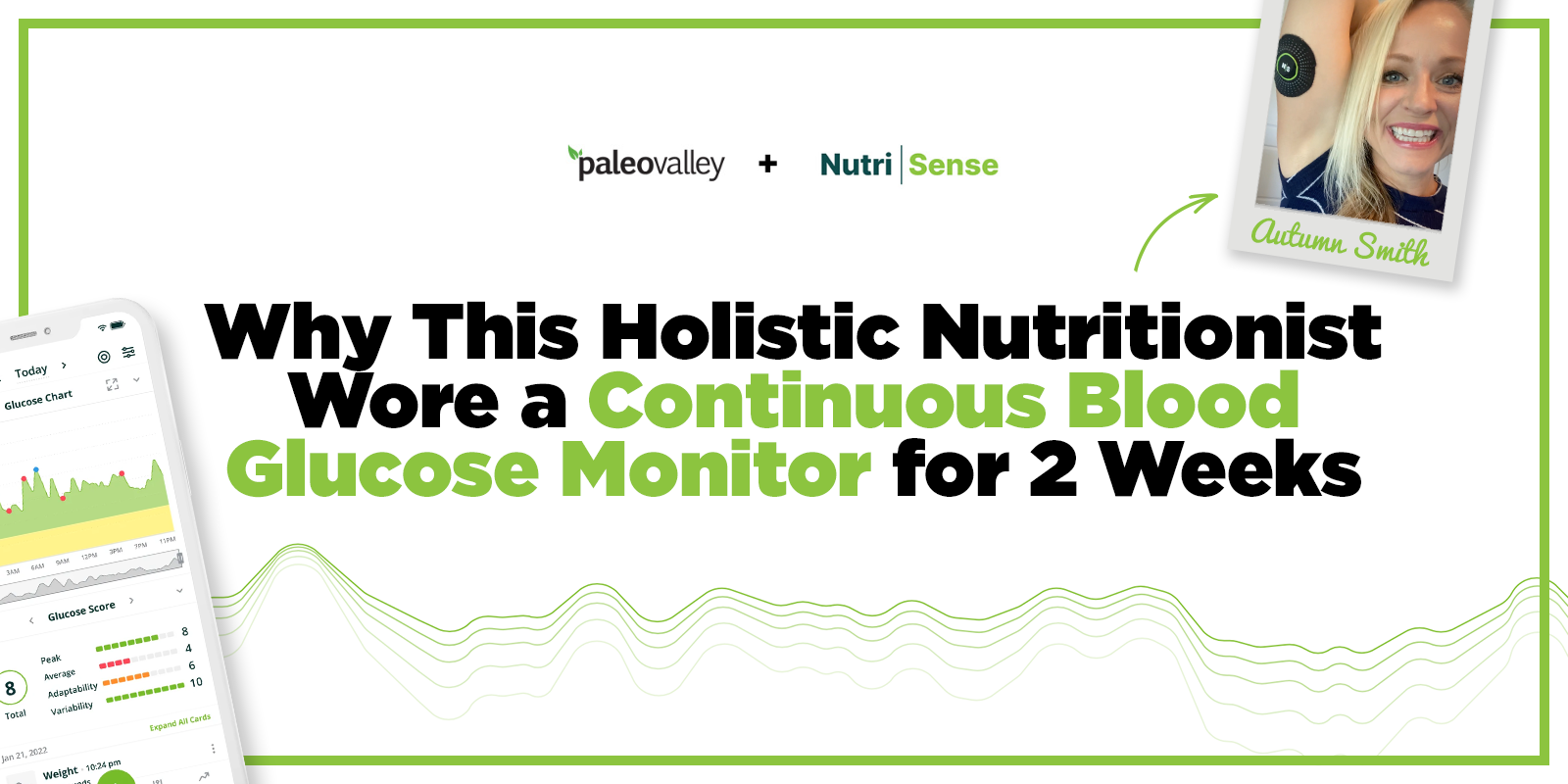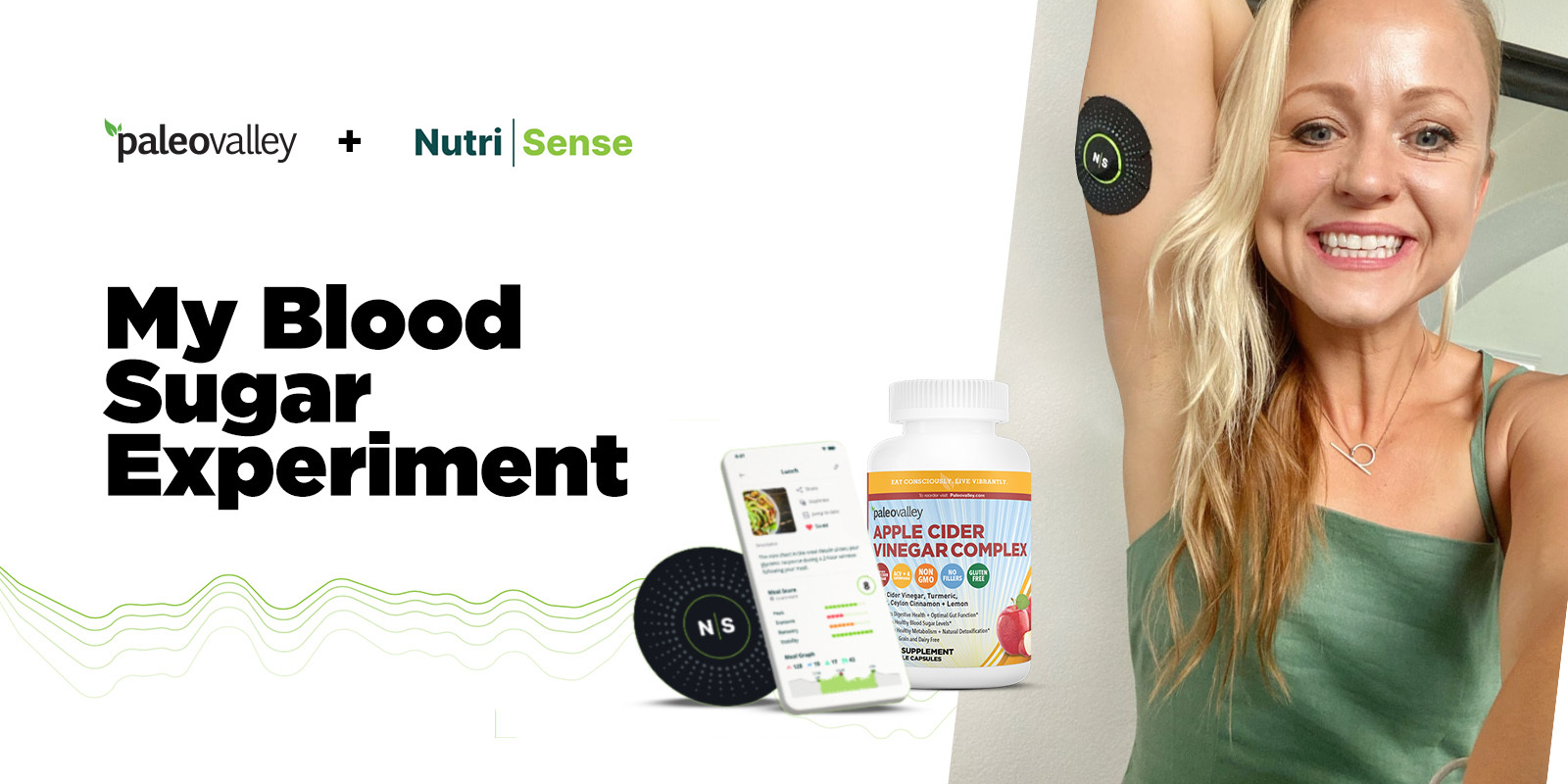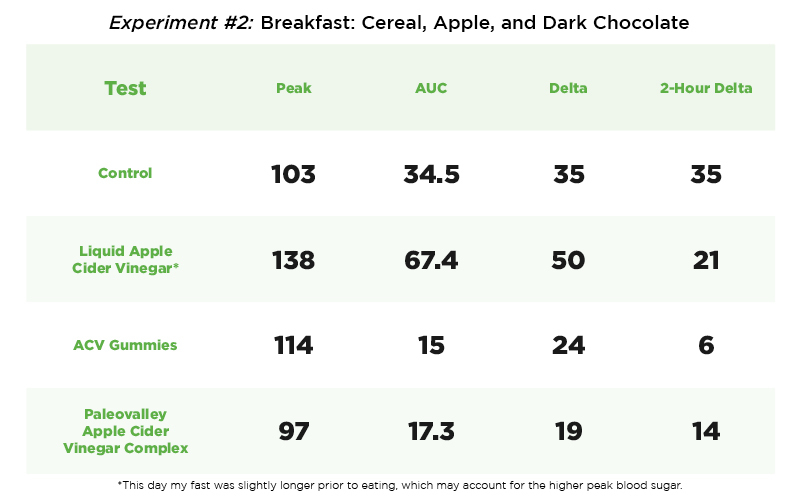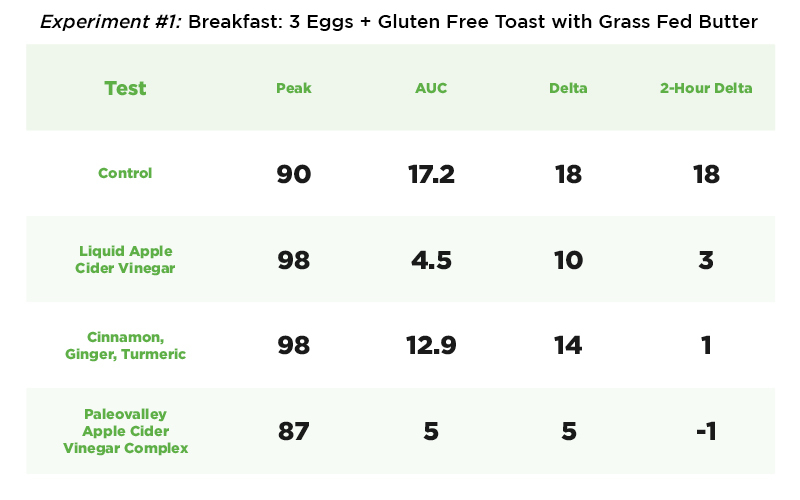
Why This Holistic Nutritionist Wore a Continuous Blood Glucose Monitor for 2 Weeks
Want to know a simple secret to feeling good, waking up energized, being able to ignore junk and sweets, and maintaining a healthy weight?
It’s maintaining stable blood sugar.
But many people - even healthy ones - actually have major blood sugar fluctuations even though they might not have tell-tale symptoms like cravings, mood swings, or fatigue.
This is backed by new research published by Stanford University that shows even nondiabetic participants who report healthy behaviors, and don’t have symptoms, have dangerous blood sugar spikes when they consume common foods!
This inspired me to take a deeper look at my own blood sugar health - and what I found shocked me!
Today, I want to share what I learned by continuously monitoring my blood sugar and conducting experiments - and if you’re inspired, I’ll share how you can give this experiment a go, too!
Why Blood Sugar Matters
Blood sugar has a major impact on energy levels, mood, cravings, and response to stress. If your blood sugar isn’t ideal you might:
- Feel “hangry” between meals
- Get light headed between meals
- Crave sweets or simple carbs
- Have energy dips throughout the day
I used to ride the blood sugar roller coaster all day - so I know these changes in energy and emotion well!
However, not everyone feels these symptoms. Research has shown almost 90% of people with prediabetic high blood sugar don’t know they have it, and 70% of those people will go on to develop full-fledged diabetes.
And diabetes, though a risk, isn’t the only one: according to Dr. Ben Bikman unbalanced blood sugar that leads to insulin resistance over time also increases your risk for eye, liver, kidney, and heart disease as well as cancer and reproductive issues.
How Blood Sugar Works
When we eat carbohydrates, the body breaks them down into sugar (glucose) in the small intestine. The glucose is small enough to pass through the lining of the small intestine and move directly into the bloodstream.
Sugar entering the bloodstream triggers the pancreas to secrete the hormone insulin, which acts like a key, “unlocking” cells throughout the body so that sugar can enter. Once taken up by the cells, glucose is used as fuel - like putting gas in a car.
If there’s more sugar than the cells need, the extra can be stored in the muscles or as fat.
It’s a pretty cool system and, ideally, it should keep blood sugar levels relatively stable. When new sugar comes in, insulin allows it to be used, causing just a temporary rise in glucose levels after a meal.
But there is a caveat: this system is really only set up to handle about 4 grams - equivalent to one teaspoon - of blood sugar at any one time. And considering that many people put multiple teaspoons of sugar in their morning coffee alone, it's easy to see why blood sugar spikes are such a huge problem!
And huge spikes in blood sugar are followed by huge drops, which can make you feel awful - lightheaded, grumpy, exhausted, and desperate for more carb-y, sugary foods to raise levels back up.
How to Keep Blood Sugar Stable
Luckily, there are things we can do to help stabilize blood sugar and avoid dramatic swings up and down.
First up, eat balanced meals. Eat plenty of protein, fat, and fiber at every meal. Avoid eating meals that are mainly carbs - like a bowl of pasta or an apple alone as a snack.
Instead, add protein and satiating fat, like a spoonful of almond butter with the apple. You can swap the pasta for zucchini noodles and add a simple sauce made with tomatoes and grass fed ground beef for a meal that nourishes your body and helps to keep blood sugar stable.
Second, regular exercise is essential for healthy blood sugar. But it doesn’t have to be intense: even a walk after dinner has been shown to reduce post-meal blood sugar levels.
And then there’s the blood sugar balancing support from apple cider vinegar and spices like cinnamon, ginger, turmeric.
Research has reported consuming apple cider vinegar can actually help maintain healthy glucose levels and help the body naturally regulate blood sugar levels. (Especially morning glucose!) Spices like turmeric, ginger and cinnamon also contain nutrients to support stable blood sugar.
A 2013 meta-analysis found that cinnamon consumption helped improve blood glucose and cholesterol levels.
Research like this is what inspired the creation of Paleovalley Apple Cider Vinegar Complex, which contains a mix of organic apple cider vinegar and spices, all in a convenient capsule.
But how well could apple cider vinegar and a few spices really work? I set out to find out!
My Big Blood Sugar Experiment
I wanted to find out both how my blood sugar levels responded to different meals - and if adding in apple cider vinegar and spices could change that.

First, I got set up with a continuous glucose monitor (CGM) from Nutrisense. This is a small device you wear on the back of the arm - it’s painless and waterproof. It measures your blood glucose levels 24 hours a day and reports the data back to your phone so you can see in real-time how your body responds.
I decided I would live the same way for two weeks, testing one breakfast each week, and a different supplement each day: either nothing, apple cider vinegar alone, spices alone, or Paleovalley Apple Cider Vinegar Complex.
On the second week, I also tested apple cider vinegar gummies.
To make the experiment as accurate as possible, here’s how I controlled all the variables I could:
- Drank the same amount of water at the same time every morning
- Slept at least 7 hours a night
- Ate the same breakfast at 8 AM sharp each morning
- Did the same workout at the same time every day
- Ate the same lunch at 12 PM every day
- Ate the same dinner at the same time every day
- Took my dog on a walk at the same time
- Went to bed at the same time
(Yes, it was brutal in some ways - but also exciting because I love science).
For the first week, my breakfast was 3 eggs scrambled in grass fed butter plus a piece of gluten free toast with grass fed butter. This is a typical breakfast for me, and it contains plenty of filling and satiating fat and protein.
For the second week I chose a breakfast much higher in carbs and lower in protein and fat: organic breakfast cereal with an apple and 2 squares of dark chocolate.
(I know this second breakfast was not the healthiest - but I wanted to be able to eat enough carbs to achieve a demonstrable effect or lack thereof).
A Quick Guide to Interpreting Blood Sugar Numbers
But before I can share the results, I need to explain how I looked at the data.
What matters for blood sugar is how high your levels rise from baseline (the peak), and then how quickly they return to baseline. Ideally, they don’t rise very high and return to baseline quickly - within 2 hours.
If you imagine plotting your baseline, the peak number your blood sugar rises, and then the return to baseline on a graph, it would create a curve.
The area under that curve represents the total change in blood sugar, and it’s this number that is reported by the continuous glucose monitor (CGM). The smaller the area under the curve, the better.
In addition to the area under the curve (AUC), the CGM also reports delta and 2-hour delta. Delta is the change from the highest to lowest reading in the 2-hour period: for instance if your blood sugar low was 90, and the high was 115, the delta was 25. 2-hour delta is the change from baseline glucose levels to the reading at 2 hours after the meal. Just like the area under the curve, the smaller delta and 2-hour delta are, the better.
The Results

What Does It Mean?
Now that you’ve seen all the data, let’s break it down and talk about the trends.
First off, no matter what supplement or spices I tested, my blood sugar response was much better with the high protein and fat breakfast (eggs and toast) than with the high carb breakfast (cereal).
No surprise there - we already know a meal high in carbs and lower in protein and fat causes blood sugar spikes!
But in Experiment #1, I found that my blood sugar stayed most stable when I took Paleovalley Apple Cider Vinegar Complex 20-30 minutes before my meal. It was even better than the spices alone or liquid ACV. Why? I suspect it’s because of the synergistic benefits of combining ACV and spices.
Experiment #2 showed again that any form of ACV or spices could help with the peak blood sugar levels. However, again Paleovalley Apple Cider Vinegar Complex was the most beneficial at keeping the peak blood sugar levels lower. The surprise outlier was liquid ACV alone - but I fasted slightly longer this day before consuming my meal, which may have impacted the results.
The Winner: Apple Cider Vinegar Complex
I had 2 big takeaways from this experiment.
#1: Eating a higher protein and fat breakfast is really important for stable blood sugar. On days when I’m too busy to prep breakfast, I’ll grab a Paleovalley Superfood Bar instead of cereal or opt for beef sticks or hard-boiled eggs.
#2: Adding Apple Cider Vinegar Complex 20-30 minutes before a meal can help maintain glucose spikes and support my blood sugar - no matter what I’m eating!
Ready to try this experiment for yourself?
Grab a CGM and a bottle of Paleovalley Apple Cider Vinegar Complex and get to testing!
Paleovalley Apple Cider Vinegar Complex is backed by a no-questions, 60-day money back guarantee, so you have time to try it out with all different kinds of meals. Not only will you feel the difference - but with a CGM you’ll actually be able to measure the results in real time.
Wearing a continuous blood sugar monitor has revealed so much about my own health! I got to see in real-time which foods were and weren’t working for me - and learned that adding in Apple Cider Vinegar Complex made a big difference in keeping my levels balanced. Struggling with blood sugar issues yourself? Click HERE to Learn more about Apple Cider Vinegar Complex + Try it RISK-FREE at up to 20% Off TODAY!
Sources:
https://www.ncbi.nlm.nih.gov/pubmed/16277773
https://med.stanford.edu/news/all-news/2018/07/diabetic-level-glucose-spikes-seen-in-healthy-people.html
https://www.ncbi.nlm.nih.gov/pmc/articles/PMC3767714/
https://pubmed.ncbi.nlm.nih.gov/17712024/








